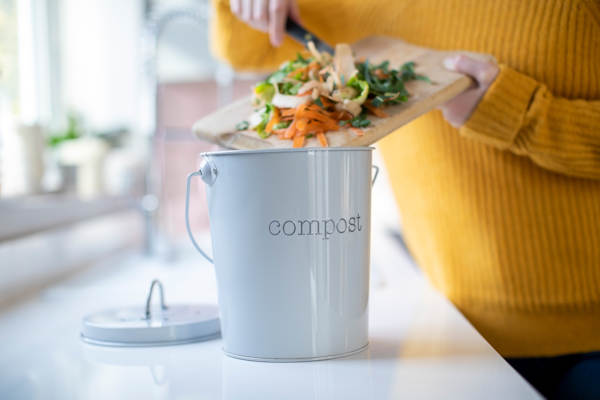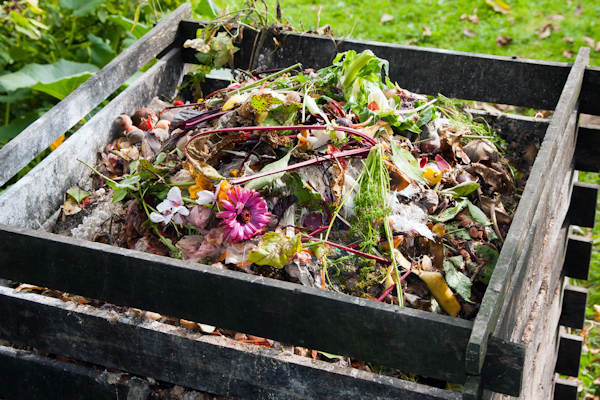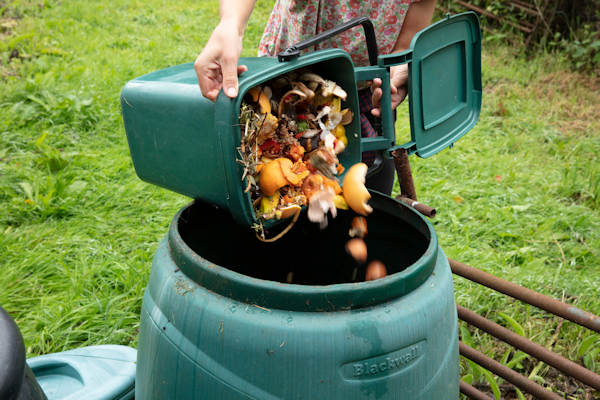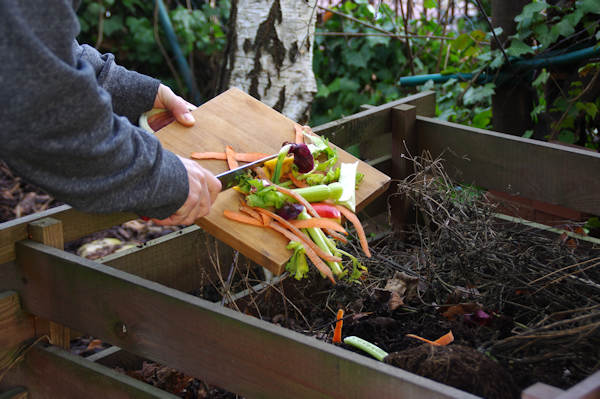How To Make Your Own Compost

Home composting is a fantastic way of making use of old, unwanted garden waste or food scraps. Not only does composting help to reduce the amount of rubbish thrown into the general waste bin, but leaves you with a nutrient rich substance that can be used for growing large, healthy plants.
Composting can often be mistaken for being overly complicated and creating a bad smell, but doing it properly is quite the opposite.
Compost is produced when garden materials are broken in the presence of carbon and nitrogen by a chemical decomposer known as aerobic bacteria.
When green material releases carbon and brown material releases nitrogen, microorganisms will begin to multiply and break down the surrounding matter.
Carbon is used as energy and nitrogen is used for protein synthesis, giving the ideal environment for bacterial growth and the breakdown of organic matter.
What do you need to make good compost?
To make nutrient dense compost, you will need an equal mix of fresh green material and brown material. We recommend the following materials for home composting.

Fresh Green Material
- Fruit scraps
- Vegetable peel
- Coffee Grounds
- Eggshells
- Grass or plant cuttings
- Fallen Leaves
- Weeds
Brown Material
- Woody stems or twigs
- Egg cartons
- Cardboard
- Newspaper
- Compostable products (e.g. paper straws or carrier bags)
To accelerate your garden compost, you can use add compost maker to your garden waste speed up the process. We recommend the following products.
How to get your compost started
Getting your compost pile started is easier than you may think, though you will need the ideal place to keep it contained. There are many ways you can choose to start your composting pile, but we would recommend a purpose built plastic or wooden bin or a DIY wooden structure that can be made from wooden planks or pallets.
A basic principle to follow when it comes to suitable compost bins would be to have sturdy walls to keep your material contained, a low access point to remove compost when it is needed, and an open-top or lid to easily add composting materials. You don’t need a large space to be able to compost at home, you can tailor the size of composting bin you need to fit your garden.
Check out our ready to use compost bins at Longacres, here.

How to maintain your compost
Turning your composting material is essential for producing the best quality and ensuring the waste stays aerated instead of becoming too compact.
Air flow is essential for the composting process to occur, meaning the more compacted your compost is, the slower it will break down. Frequent turning of your compost will encourage quick composting.
Compost turning should be done once every three to four months and can be as simple as taking a garden fork and giving it a thorough mix. To keep your compost loose, you can add whole rolls of toilet paper, or inner cardboard tubes from toilet paper and paper towel rolls.
During hot weather, compost bins can easily dry out and the materials will break down much slower. Keeping your compost moist is another key component to high quality matter, and can easily be done with a watering can or garden hose. You can check the moisture levels while turning your compost, and add more water when necessary.
Ways to use your compost

Making your own compost is a labour of love, and can take from six months to two years to reach maturity and be ready for use. You will know your compost is ready to use when it turns into a brown, crumbly, soil like substrate with an earthy aroma.
There are many ways in which you can use your compost, though these are our favourite.
Soil enhancer – Mix into the existing soil in garden beds and borders before planting to enhance nutrients and moisture.
Weed deterrent – Layering over soil helps reduce weed germination.
Potting compost – Use to plant young plants into pots or containers.
Root protection – Spread a thick later over garden beds and borders to help retain moisture and protect exposed roots from harsh elements.








